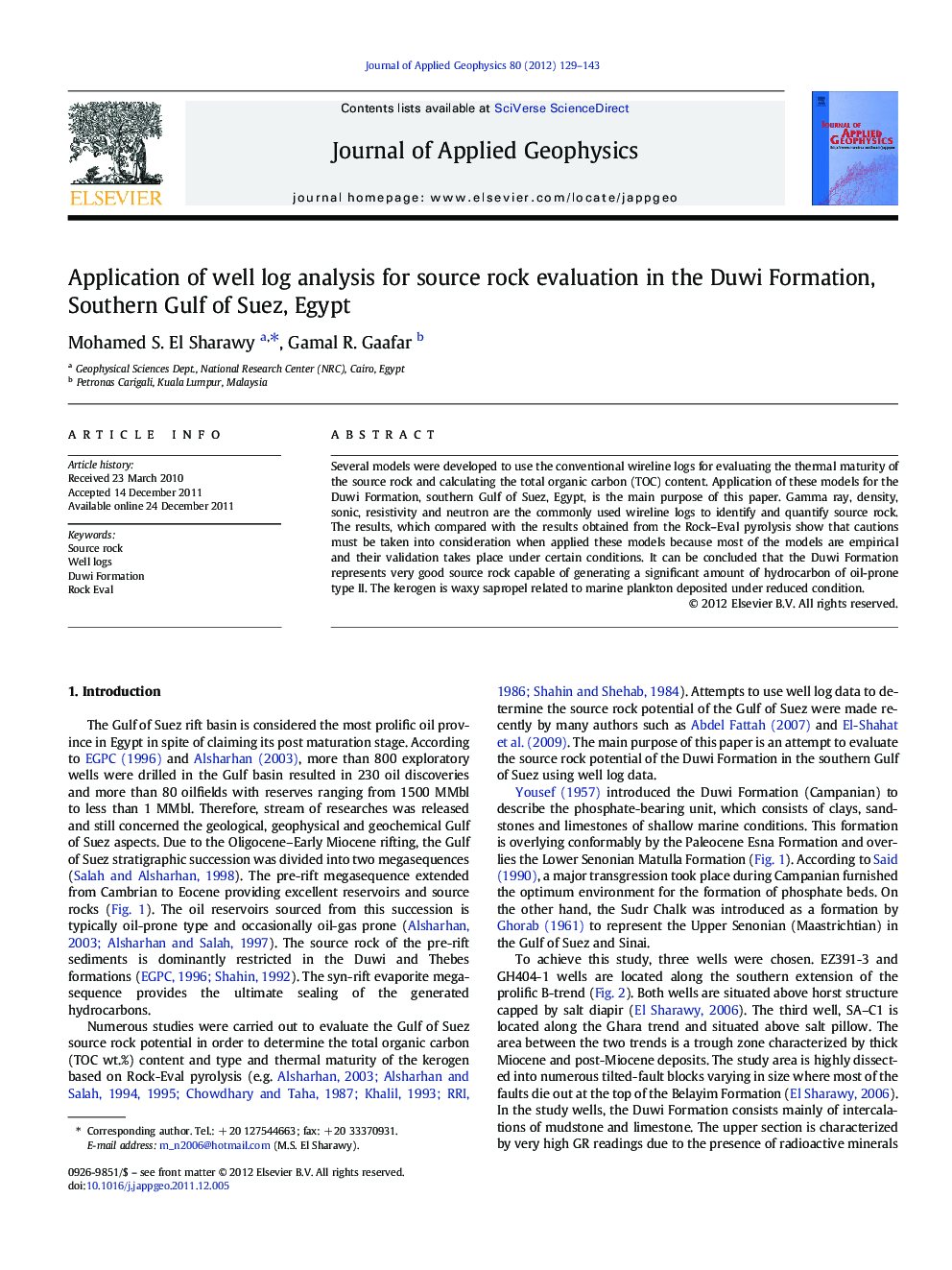| Article ID | Journal | Published Year | Pages | File Type |
|---|---|---|---|---|
| 4740659 | Journal of Applied Geophysics | 2012 | 15 Pages |
Several models were developed to use the conventional wireline logs for evaluating the thermal maturity of the source rock and calculating the total organic carbon (TOC) content. Application of these models for the Duwi Formation, southern Gulf of Suez, Egypt, is the main purpose of this paper. Gamma ray, density, sonic, resistivity and neutron are the commonly used wireline logs to identify and quantify source rock. The results, which compared with the results obtained from the Rock–Eval pyrolysis show that cautions must be taken into consideration when applied these models because most of the models are empirical and their validation takes place under certain conditions. It can be concluded that the Duwi Formation represents very good source rock capable of generating a significant amount of hydrocarbon of oil-prone type II. The kerogen is waxy sapropel related to marine plankton deposited under reduced condition.
► The Duwi Formation in the southern Gulf of Suez is considered very good early mature source rock. ► The hydrocarbon is oil-prone type II. ► The kerogen is waxy facies related to marine sediments deposited under reduced conditions.
